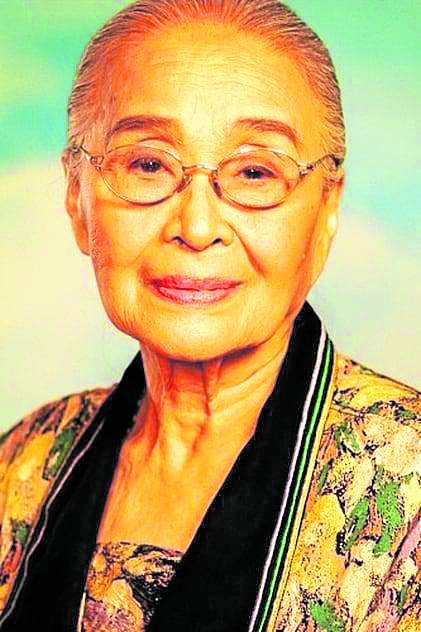
She was a colleague and friend of my mother, who taught Spanish at Far Eastern University (FEU) for many years. My mother was, of course, much older, and called her by her nickname, “Rustie.” So when I got to know her later, I called her “Doc Rustie” because she was, after all, a Ph.D. from the University of Santo Tomas (UST).
She was Rustica Carpio, a woman who wore many hats: multiawarded actress, Palanca Award-winning essayist, author, professor, playwright, theater director, book editor and cultural administrator, among other accomplishments.
Carpio, who died Feb. 2 in Imus, Cavite, at the age of 91, was born in Paombong, Bulacan, in 1930 and studied at Philippine College of Commerce (now Polytechnic University of the Philippines, or PUP, where she set up its Department of Mass Communication and was first dean of the College of Communication), Manuel L. Quezon University, New York University and UST, where she obtained her Ph.D. in literature, meritissimus, in 1979.
In 2013 Carpio published her book of memoirs, “Shuttling Through Stage and Screen,” where she revealed that she was among the first group of Filipino entertainers who visited the troops during the Korean War in the early 1950s. The Americans and the South Koreans were so taken with her that they named a hill in her honor!

Trauma
She also wrote about an incident in which a man tried to rape her, but she escaped from his clutches and sought refuge in the first house that she saw. I wanted to ask her if the traumatic episode was the reason she never married, but decided it would not be proper.
Teaching and the theater were her forte. Her roles were varied, as in Lady Macbeth, Sisa, Teodora Alonso and Leonor Rivera; and she worked with stalwarts who would later be National Artists—Severino Montano, Lamberto Avellana, Daisy Hontiveros-Avellana, Rolando Tinio and (in films) Fernando Poe Jr. and Ishmael Bernal.
Through a mutual friend, Hontiveros-Avellana asked her to play Kikay in the cult play by Marcelino Agana Jr., “A New Yorker in Tondo.” Carpio declined, saying the role was not suited to her persona. The reply from the formidable Hontiveros-Avellana jolted her: “Tell her she is silly.” Thus challenged, she accepted the role, and lo and behold, the Americanized Kikay became her signature role during the 1960s.
Flashback: In a political move, then President Gloria Macapagal Arroyo posthumously declared Poe a National Artist, but his wife, Susan Roces, rejected the honor, claiming Arroyo had cheated him of the election. Carpio remembered Poe as a gentleman, and he would address her as “professor.” And a professor she was, as she taught not only in PUP, but at UST, Pamantasan ng Lungsod ng Maynila and, finally, at FEU.
As for Bernal, Carpio’s first film role was in his “Nunal sa Tubig.” In one scene she was grieving over the death of a son, albeit in a muted way. One critic lambasted her for playing it cool, for not interpreting grief in an emotional way, even hysterically, in the supposed way of rural Filipino women. When I pointed this out to her, she merely shrugged her shoulders. “Well, the director wanted it that way.”
Other notable roles were in Brillante Mendoza’s “Lola,” an acting derby with another film great, Anita Linda; Mendoza’s “Captive,” where she played a social worker who dies; and the indie film “Aparisyon,” where her role was that of a troubled nun. Her performance in “Lola” won for her international awards in Spain and Iran and, at home, the Gawad Urian for Best Actress.
Patience, tolerance
In a 2013 interview with me, Carpio discussed her craft: “I put my own personality, a little of myself, into the role, plus what the playwright expects. I have been influenced by Konstantin Stanislavsky. I internalize the role, concentrate on it and make it appear simply effortless.”
She added, “The years on the stage have taught me patience, more professionalism, more tolerance in everything, more tolerance for those who try to upstage you and lessen your role. I respect the director; I have never been scolded by any director.”
The actress-writer was quite a musical star in her childhood and youth. “I sang in an operetta at the age of 10,” she recalled laughingly at the age of 82. “And now I want to sing in a zarzuela!”
Sadly, to my knowledge, she never did.
—CONTRIBUTED













































